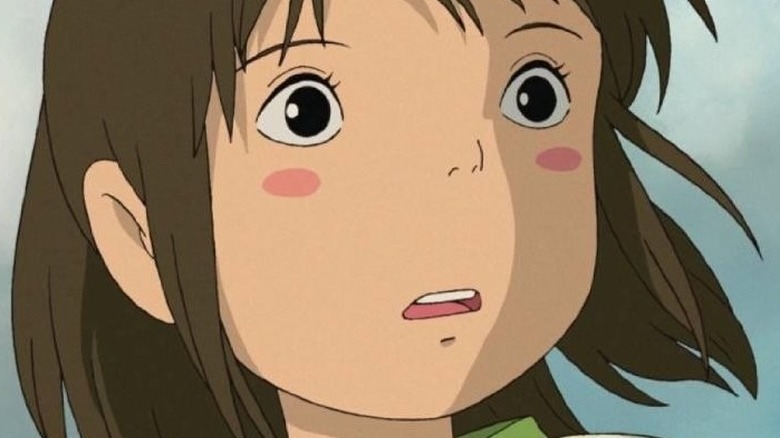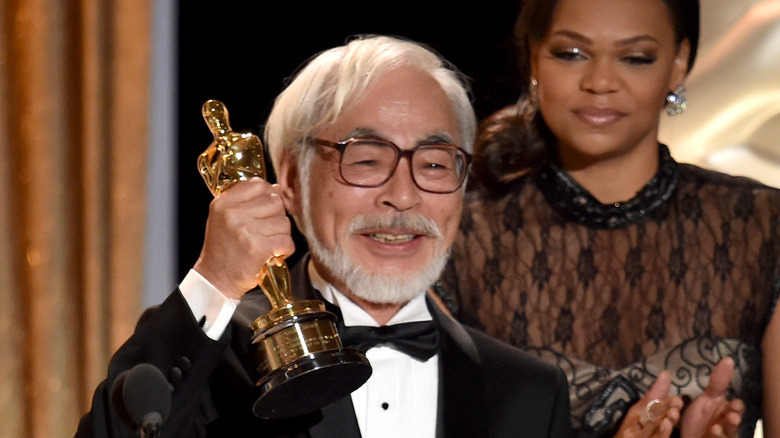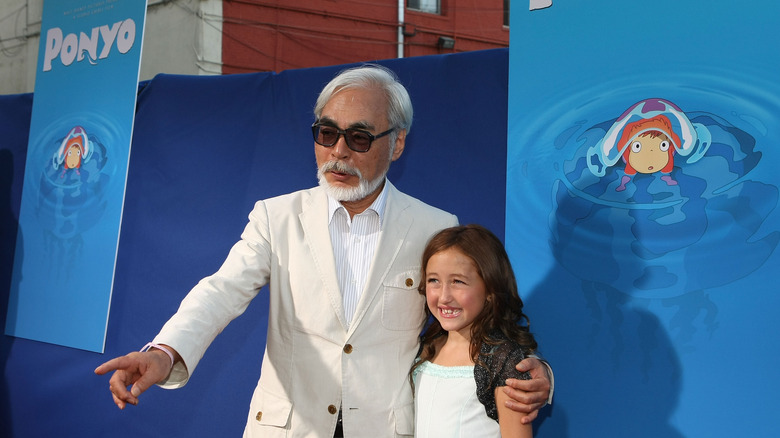Studio Ghibli's Legendary Spirited Away Almost Never Even Existed
It's almost as impossible to imagine a world without the most iconic works of legendary filmmaker Hayao Miyazaki as it was close to being a reality.
The world-renowned animation pioneer was the mind behind such classics as "Castle in the Sky," "Princess Mononoke," and "My Neighbor Totoro" — though arguably, his most famous work is 2001's fantasy tale, "Spirited Away." The film follows an unlikely young hero named Chihiro, who must learn to survive in world of spirits after her parents become trapped within. She encounters a number of dazzling and frightening entities throughout her tumultuous journey, including a ghostly stalker called "No Face."
The film was an instant success for Miyazaki, as it won him an Academy Award for Best Animated Picture and reigned as the highest grossing movie in Japan for 19 years (before being unseated by "Demon Slayer the Movie: Mugen Train in 2020, per Kogyo Tsushin). Among fans of animated cinema, it is universally beloved, with viewers indulging in scrutinizing even its smallest details. "Spirited Away" regularly appears on lists noting the greatest films of the 21st century, with the BBC ranking it fourth and The New York Times ranking it second.
Despite this success, "Spirited Away" almost never existed, with Miyazaki having to overcome burnout twice to see it through to completion.
Why did Hayao Miyazaki retire in 1997?
Miyazaki has gone in and out of retired a few times throughout his career, with one such time occurring after the completion of his three-hour masterpiece "Princess Mononoke" in 1997. While the film performed incredibly well in Japan, it failed to make a notable impression at the American box office despite glowing critical reviews. Miyazaki has not stated if this contributed to his retirement. More likely, Miyazaki was exhausted from the production process of "Princess Mononoke."
What eventually brought him back was an interaction with a young girl, and the realization that entertainment offerings in Japan at the time didn't offer her anything but, in his words, "crushes and romance" (per an interview with Ainmage, translated by Nausicaa). Thus, he wrote "Spirited Away" with the intent of creating a young heroine who was divorced from such tropes entirely.
Not even this revelation, however, would have occurred had Miyazaki not persevered through a challenge far darker, and even earlier, in his career.
What almost stopped him from creating entirely?
As Slashfilm recounts, Hayao Miyazaki began working at Toei Animation in 1963, which effectively began his professional animation career. In an essay written by Miyazaki himself, he explains how this time at Toei not only failed to inspire him, but actually ate away at the inspirations that once fueled his vision (via Nausicaa).
The film "Hakujaden" (The Legend of the White Snake) — Japans first animated feature and once a lightning rod for Miyazaki — was now only memorable to him for its flaws. On the brink of ending his fledging career in animation, Miyazaki had a chance encounter with a film foreign to Japan entirely — 1975's "The Snow Queen." A Soviet film directed by Lev Aramanov, "The Snow Queen" opened Miyazaki's eyes to the emotional capabilities of animated storytelling. As he explained, "It proved that when you draw a simple and strong emotion earnestly and purely, animation can strike people's hearts as much as the best works of other media can."
Miyazaki's journey is a reminder that inspiration can enter one's life when least expected, and that the true measure of an artist is often perseverance and time.


